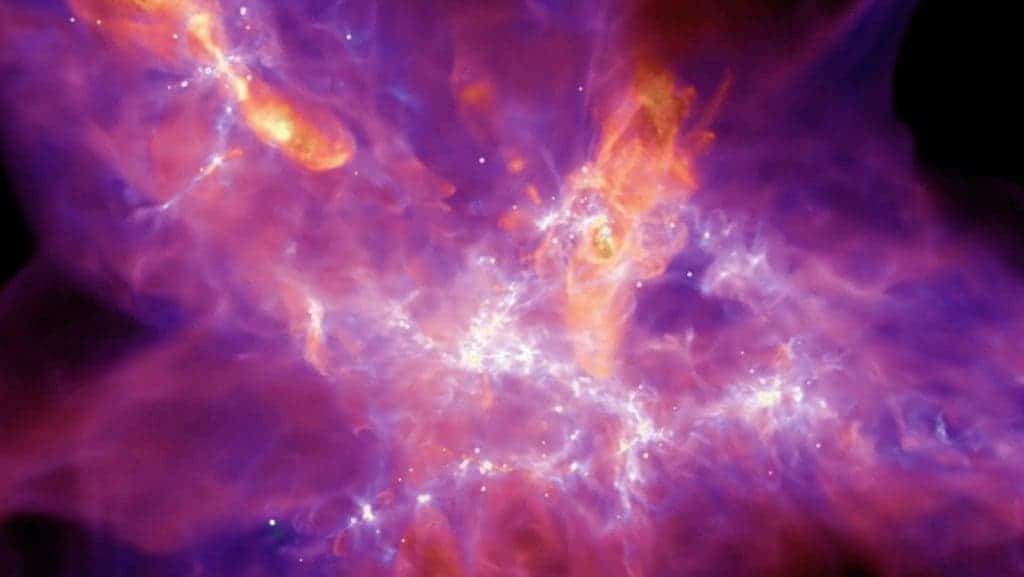Simulations are great tools for astrophysics, we can model everything from our (cosmic) backyard to things outside the Milky Way galaxy — and the universe itself. Now we have a new example of simulated star formation.

A group of scientists from several American universities developed a numerical simulation called STARFORGE (STAR FORmation in Gaseous Environments). STARFORGE is a 3D simulation of star formation, it is the first to provide the visual of an entire gas cloud. It’s also the first simulation to include complex physical parameters into its code.
Producing stars is complicated (both in the real life, and in simulations), and in order to create more accurate reproductions, STARFORCE considers a long list of physical phenomena, not just gravity but also thermodynamics and stellar dynamics. Perhaps the most important physical input to the simulation is magnetohydrodynamics — which describes how an extremely hot ionized gas, a star in this case, behaves.
The best example of what STARFORGE can do is the massive giant molecular cloud named ‘The Anvil of Creation’ by the team. In the video you can see the time evolution in Mega years of the stars forming in the middle of the gas. As the stars appear, you will notice the white marbles popping in the screen, some emit massive yellow jets, those jets emanating from them. The stunning detail of the simulation is great to look at even without knowing exactly what’s going on.
It is also possible to simulate supernovae with the algorithm. The team assumes every star with 8 times the mass of the Sun can go supernova, and STARFORGE will help them explore the phenomenon and how it is affected by various parameters. The simulation can be carried out until it reaches the supernova remnant stage.
To get an idea of how important this study is, consider the Hubble Space Telescope observed the supernova in NGC 2525 for an entire year (from February 2018 to February 2019) just to get a timelapse of the dim phenomenon — and observation tools like Hubble are limited. With simulations like STARFORGE, scientists can study the evolution of stars and supernovae remnants in less time and with much better resolution.
Credits: ESA/Hubble & NASA, M. Kornmesser, M. Zamani, A. Riess and the SH0ES team.
With STARFORGE, the team also observed an interesting effect in star formation. According to other studies, every time the star forms ejecting jets it is expected that stars lose lots of material that could make up for their total mass. Reasonable, right? The simulation had seen this happening very clearly, and also concluded that this doesn’t change much the global gas where the stars form. A great result for STARFORGE, proving it is a reliable tool for astrophysics.
The study was published in the Monthly Notices of the Royal Astronomical Society journal.









